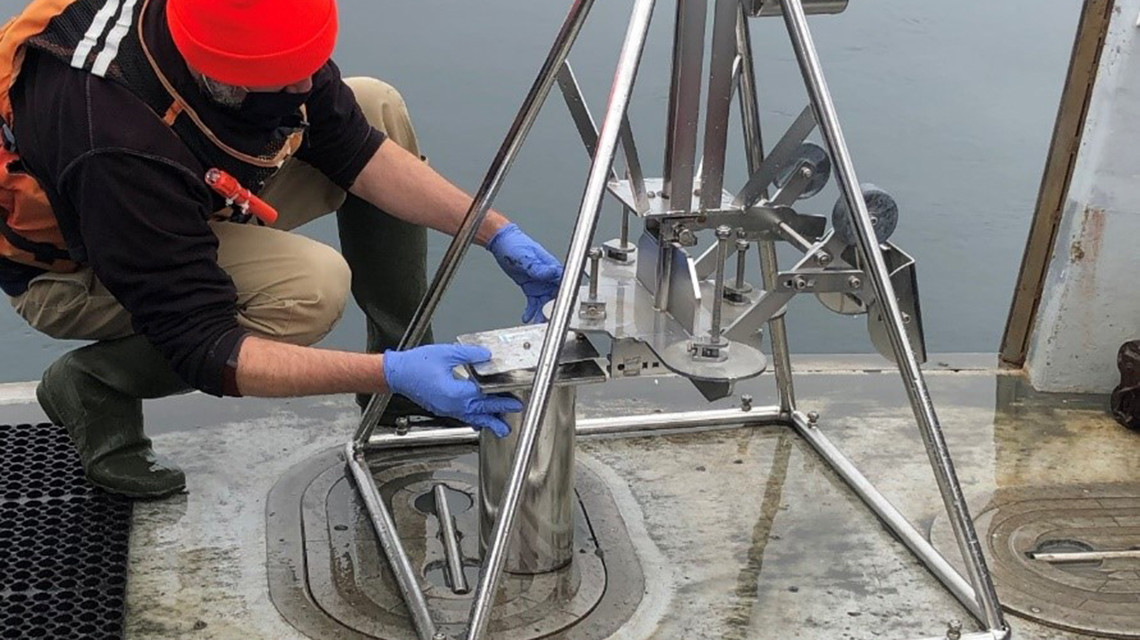New research shows seaweed farms store carbon as effectively as natural coastal ecosystems, increasing the potential of marine carbon removal methods.
The study, supported by the IAEA and recently published in Nature: Climate Change, demonstrates that seaweed farms have the capacity to store organic carbon in their underlying sediments at rates similar to those of natural Blue Carbon habitats. Blue Carbon is the term given to the carbon captured and stored in marine ecosystems, which has the potential to help mitigate climate change.
IAEA scientists used nuclear techniques to assess carbon burial rates in the first comprehensive, empirical assessment of carbon storage in seaweed farms around the world. The study opens the door to new opportunities in climate change mitigation.
Potential 'Nature-Based' Climate Change Solution
Blue Carbon - carbon stored in marine ecosystems - has been lauded as a potential 'nature-based' solution for climate change mitigation. Natural ecosystems like mangrove forests, seagrass meadows and salt marshes sequester carbon, or trap it, in their sediments, which accumulate significantly faster than similar terrestrial ecosystems. The study, published with support from Oceans 2050's Global Seaweed Project, confirms that seaweed farms, which are not naturally occurring but rather still 'nature-based', can now be included in this category.
Analysing data from seaweed farms on five continents, the study showed that seaweed can bury carbon in sediments at rates comparable to natural Blue Carbon habitats. "We hypothesised that carbon burial in these sediments would be significant, and with support from exceptional local teams, tested it in 20 different seaweed farms around the world," said Pere Masque, one of the paper's main authors, and a former IAEA staff member.

Retrieving a sediment core from multiple corer sampling gear. (Photo: Atlantic Sea Farms)
Determining the accumulation rates of organic carbon in marine sediments is complex; but can be achieved through the use of nuclear techniques. Marine sediments accumulate over time in layers, so sample collection must be done using sediment corers, long cylindrical containers that are inserted in sediment vertically to collect samples while keeping layers intact. Once the samples are collected and prepared, scientists use the isotope lead-210, a naturally occurring radionuclide, to determine sediment accumulation rates. "Lead-210 has a half-life of 22 years, so we can use it to assess accumulation rates at time scales of decades to a century. This lets us quantify the burial rates of organic carbon stored in these ecosystems," said Masque.
"This kind of research is so exciting because it opens up even more opportunities for scientists to conduct this really important work," said the IAEA scientist Beat Gasser, who is working closely with the project. "The nuclear tools that we use give us the ability to be extremely precise when we're calculating carbon accumulation rates, which is key when studying more novel areas."
Blue Carbon: An Emerging Research Field
The role of Blue Carbon in climate change mitigation and adaptation is an emerging research field. As more data becomes available, stakeholders in policy and the private sector can use it to develop sustainable policies and pioneering climate technologies.
"Seaweed farming offers a scalable, nature-based solution for carbon removal while delivering co-benefits such as biodiversity enhancement, economic opportunities and food security," said Carlos Duarte, the study's lead author and Oceans 2050's Chief Scientist.
The number of seaweed farms around the world is increasing. Seaweed is gaining popularity as food, and is also used in medicines, cosmetics and fertilizers. Around 35 countries worldwide carry out commercial harvesting of seaweed, in water ranging from cold, through temperate to tropical.
As the world grapples with the impacts of excess greenhouse gas emissions, scientists are urgently seeking potential solutions. Moving forward, additional studies are needed to determine carbon accumulation rates worldwide. In support of efforts to contribute to a greater understanding of a global Blue Carbon inventory, the IAEA works to transfer knowledge and build capacity in countries around the world.






